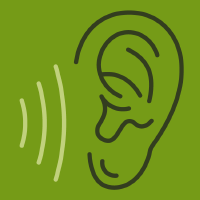Topic Menu
► Topic MenuTopic Editors

2. Division of Otolaryngology, Department of Surgery, Instituto de Investigación Biosanitaria, ibs.GRANADA, Universidad de Granada, 18071 Granada, Spain
3. Meniere’s Disease Neuroscience Research Program, Faculty of Medicine & Health, School of Medical Sciences, The Kolling Institute, University of Sydney, Sydney, NSW 2006, Australia

Brain, Hearing and Tinnitus Science
Topic Information
Dear Colleagues,
Tinnitus is the phantom percept of an internal non-verbal set of noises or tones reported by more than 15% of the population, and it is usually associated with hearing and/or brain disorders. Severe tinnitus is considered a disorder when it is associated with emotional distress, cognitive dysfunction, and/or autonomic arousal, leading to behavioral changes and functional disability. The annoyance experienced by patients varies from totally absent to tinnitus-related suicidal tendency. The neurophysiological and molecular basis of tinnitus disorder is starting to be deciphered, and a deep knowledge of the mechanisms of hearing loss, hyperacusis, and several mental and neurological conditions related to tinnitus is essential for a better understanding and management of tinnitus patients. To date, there is no standard treatment that may reliably cure tinnitus. Among the most important reasons is the large variety among tinnitus patients, their temporal variation of symptoms and the heterogeneous responses to clinical interventions. Hearing loss seems to be one of the largest risk factors for tinnitus, but not all patients with hearing loss develop tinnitus, and not all patients with tinnitus exhibit measurable hearing loss. Epidemiological and genetic studies have shown that severe tinnitus is associated with hyperacusis, and both genetic factors and noise exposure have a significant contribution to tinnitus disorders. In addition to this, somatosensory disorders and some rare forms of tinnitus have a clearly identifiable neuroanatomical origin, such as arteriovenous malformation, aneurysm, or acoustic neuroma. The challenge is to improve the diagnostic procedures of tinnitus and develop personalized medicine for tinnitus patients: to assign the appropriate treatment or combination of treatments to each patient. With this multidisciplinary Topic, we want to generate an open access forum for clinical and translational tinnitus research, including preclinical studies, innovative diagnostic procedures, and novel treatment strategies that aim to improve the patient journey from diagnosis to the best-suited therapeutic approach for the individual patient. In this respect, research papers on individualized treatment decisions and decision support systems are also strongly encouraged. Original research papers and systematic reviews of high quality are welcome.
Prof. Dr. Jose A. Lopez-Escamez
Dr. Winfried Schlee
Topic Editors
Keywords
- brain
- hearing
- tinnitus
- vertigo
- Meniere disease
- vestibular migraine
- vestibular disorders
Participating Journals
| Journal Name | Impact Factor | CiteScore | Launched Year | First Decision (median) | APC |
|---|---|---|---|---|---|

Audiology Research
|
1.7 | 1.1 | 2011 | 22.9 Days | CHF 1400 |

Biomedicines
|
4.7 | 3.7 | 2013 | 15.4 Days | CHF 2600 |

Brain Sciences
|
3.3 | 3.9 | 2011 | 15.6 Days | CHF 2200 |

International Journal of Environmental Research and Public Health
|
- | 5.4 | 2004 | 29.6 Days | CHF 2500 |

Journal of Clinical Medicine
|
3.9 | 5.4 | 2012 | 17.9 Days | CHF 2600 |

MDPI Topics is cooperating with Preprints.org and has built a direct connection between MDPI journals and Preprints.org. Authors are encouraged to enjoy the benefits by posting a preprint at Preprints.org prior to publication:
- Immediately share your ideas ahead of publication and establish your research priority;
- Protect your idea from being stolen with this time-stamped preprint article;
- Enhance the exposure and impact of your research;
- Receive feedback from your peers in advance;
- Have it indexed in Web of Science (Preprint Citation Index), Google Scholar, Crossref, SHARE, PrePubMed, Scilit and Europe PMC.

